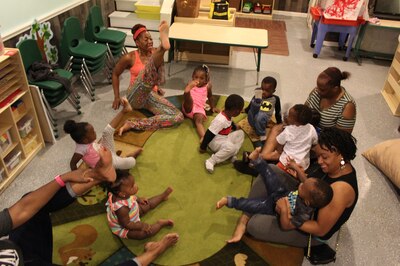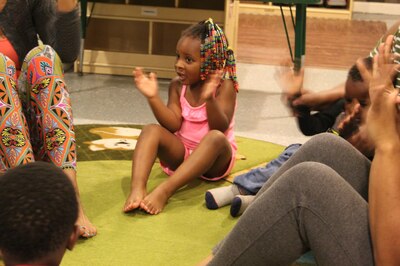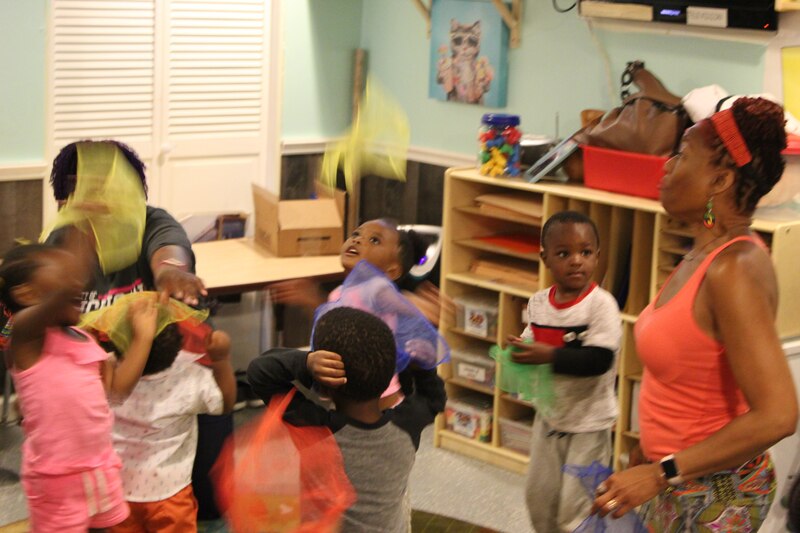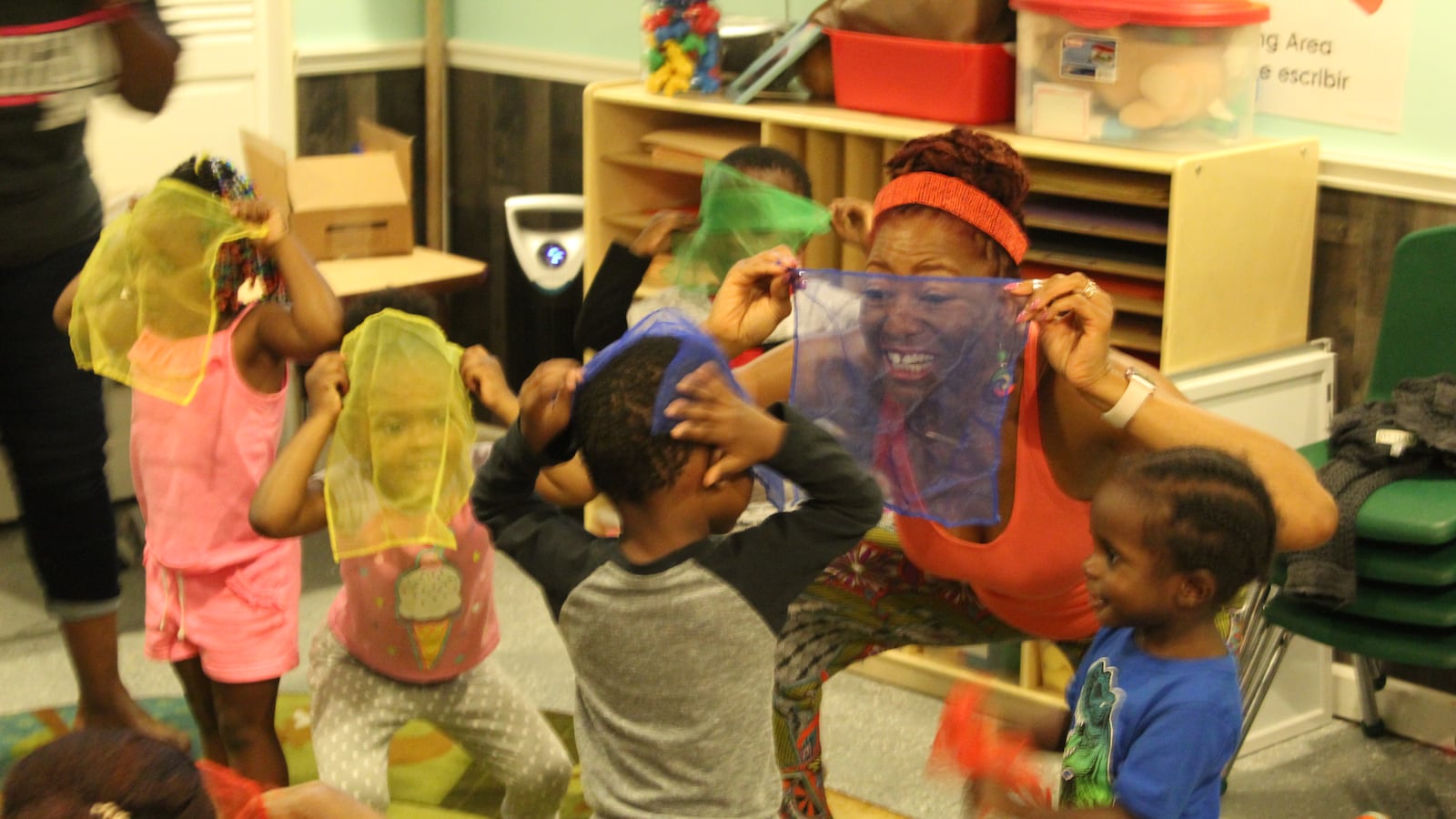From the street, it’s hard to tell that Jill Bostic’s home in Detroit’s Brightmoor neighborhood is a laboratory for improving early childhood education.
Step into her brightly painted basement, though, and it’s a different story. Kimberli Boyd’s voice rises over a dozen very young children sitting on a circular carpet. They sing along, patting out the rhythm on their knees: “Hello to Riley, yes indeed!”
Boyd, a dancer and choreographer, works with young children across Detroit through a program called Living Arts Detroit Wolf Trap. Now the program is expanding into home-based centers in Bostic’s neighborhood with the help from a Detroit-area philanthropy, the Max M. and Marjorie S. Fisher Foundation.
The Fisher foundation has invested heavily in Brightmoor for years, hoping to turn a symbol of decline into a signal of recovery. Its investments have ranged from blight removal to early childhood education, where its grants reached $1.3 million last year alone.

Once a thriving middle-class part of northwest Detroit, Brightmoor’s population was halved between 1990 and 2010 amid white flight, the shrinking of the auto industry, and the breakdown of the city’s school system.
Detroit Wolf Trap has operated for years in the city’s federally funded Head Start programs, serving nearly 1,000 students annually. It is part of a national arts education initiative that has reached upwards of 50,000 students and has shown promise in raising their academic outcomes.
After starting at four Brightmoor homes this spring, including Bostic’s, the arts program will expand to seven new child care centers during the 2019-2020 school year.
Expanding to homes is important because they make up a significant portion of all child care centers. Across the state, more than half of all centers operate in private homes.
In Detroit, where many centers are home based, virtually no 5-year-olds are ready for kindergarten level work when they enter school for the first time.
By sending artists like Boyd to in-home child care centers, the foundation hopes that their art-focused approach to education will prove contagious, spreading to child care centers across Brightmoor — and eventually across the city.
“The ultimate goal of our work is to pass down effective arts strategies to teachers so that they can incorporate movement, music, and drama into their daily work with children,” said Erika Villareal Bunce, director of programs at Living Arts, the nonprofit that runs Detroit Wolftrap.

On a Monday morning in July, Boyd’s voice filled the small basement at Jill’s Creative Learning. For 45 minutes, she made learning look like a lot of fun. Children danced, stretched, crawled, bounced, and sang. Every time their attention wandered, Boyd came up with yet another song and dance.
Her musical chants are loaded with information — rhymes, primary colors, vocabulary, numbers — that will come in handy when the children enter kindergarten. She believes art is a powerful tool to help students learn.
Bostic, who owns the center and operates it out of her home, agrees.
“It’s helping the children develop language and sounds,” she said. “Once you start singing, that brings the children in.”



